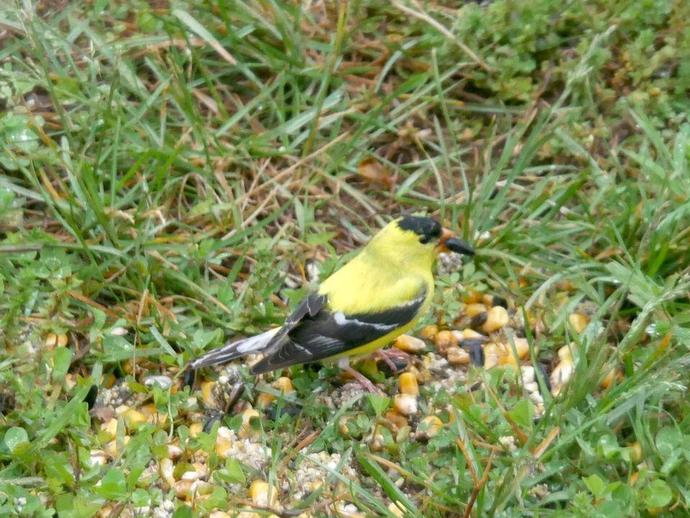February 11, 2021
Ben is away from the museum this week, so we're reaching into the archives for today's #BenInNature update presented by our friends at Carter Bank & Trust! The following post was originally published on May 22, 2020.
The American goldfinch (Spinus tristis) is always a welcome sight at the birdfeeder. Both of the goldfinches pictured here are males, as they have vibrant yellow feathers and a black cap; the females are a duller yellowish-brown color and lack the black cap.
American goldfinches are migratory birds, and during their breeding season, they can be found from North Carolina all the way up to Canada. During the winter, the birds at the northernmost part of the range will migrate south of the U.S./Canadian border and can be found as far south as Mexico. Because of this overlap in range, some of the more southerly populations of goldfinches don't migrate at all but are year-round residents.
The American goldfinch is the only bird within its genus to undergo two molts within the year, once in spring and once in autumn. This is why goldfinches spotted in the spring and summer have vivid coloration and the goldfinches spotted outside of breeding season are much duller in color.
While goldfinches will eat insects on occasion, they're generally pretty strict vegetarians (we all slip up from time to time, I suppose). If you'd like to attract goldfinches to your bird feeder, try Niger seed; it's their favorite!
ABOUT #BenInNature
Social distancing can be difficult, but it presents a great opportunity to become reacquainted with nature. In this series of posts, Administrator of Science Ben Williams ventures outdoors to record a snapshot of the unique sights that can be found in the natural world. New updates are posted Monday - Friday, with previous posts highlighted on the weekends. This series of posts is made possible thanks to the support of VMNH Corporate Partner Carter Bank & Trust (www.cbtcares.com)
NATURE PHOTO IDENTIFICATIONS
If you discover something in nature that you would like help identifying, be sure to message us right here on Facebook with a picture (please include location and date of picture) and we'll have our experts help you identify it!

 Hours & Admissions
Hours & Admissions Directions
Directions

